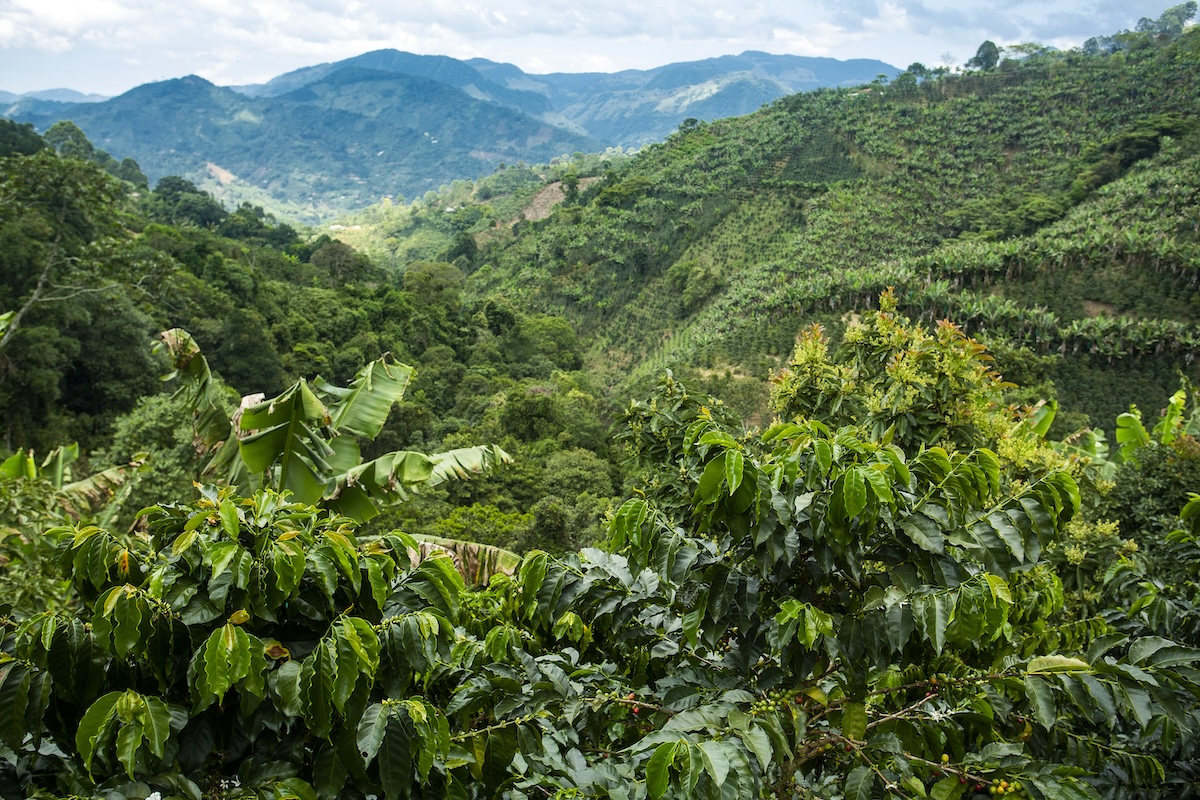With coffee prices at a historic high, Colombia’s coffee growers are currently benefiting from favorable market conditions. However, the seasonal nature of the coffee business, surging input costs, erratic weather patterns, and evolving trade dynamics combine to create challenges that could threaten the industry’s growth trajectory in the long-term.
Protecting Colombia’s position as a premium producer requires innovative financial solutions, climate adaptations, and expanded market access.

Working Capital Challenge
Colombian coffee growers face a fundamental timing challenge: agricultural cycles do not align with traditional financing structures. Significant upfront costs for labor, fertilizer, and infrastructure improvements often must be funded before returns are realized. This mismatch between when capital is needed for operations and when revenue from harvests is received creates persistent financial pressure for coffee producers.
Traditional banks that can support such investments often view coffee growers as high-risk borrowers, resulting in loan terms with high interest rates and rigid payment schedules. This creates a consistent cash flow gap for farmers, making it challenging to finance the operations needed to maximize crop yield, even when coffee commands high prices.
Financing Rising Input Costs
One of the biggest challenges is financing labor. Colombia’s steep terrain and focus on quality require handpicking the coffee cherries. With today’s ongoing shortage of skilled workers, a farm’s labor costs can reach up to 60% of its total expenses.
At the same time, prices for essential inputs like fertilizer continue to fluctuate. Fertilizer prices increased dramatically by 80% in 2021, peaked in spring 2022, and then stabilized throughout 2024. Small and mid-sized coffee growers, which account for 95% of coffee production in Colombia, are particularly affected by these unpredictable costs.
Farmers need flexible financing options that match their agricultural seasons. For example, an in-kind financing program for fertilizer allows coffee cooperatives to exchange fertilizer for future coffee deliveries from their farmers. This solves the farmers’ immediate input needs and sales challenges.
Adapting to Climate Variability
When combined with rising input costs, increasingly variable growing conditions have made it even more difficult for coffee growers to remain financially solvent. Over the last several years, unpredictable rainfall, severe droughts, new crop diseases, and temperature shifts have led to variations in flowering and fruiting cycles that can significantly reduce yields.
These climate effects vary across Colombia’s diverse growing regions. Farms at higher elevations face heavier rains, erosion, and transportation challenges. At lower altitudes, rising temperatures and unpredictable sun and precipitation patterns are becoming too extreme for coffee plants to flourish.
As climate patterns continue to evolve, it will be crucial for farmers to adopt location-specific approaches based on their altitude and local conditions. Some innovations are already being implemented across the industry, from climate-resilient coffee varietals to government-based financial funds. Forward-thinking cooperatives are making strides to optimize their operations by working with partners who can provide the capital and expertise needed to support their specific needs.
Expanding Market Access
On the export side of the business cycle, both established and emerging markets are shaping global demand patterns for Colombian coffee. Colombia exports its coffee to more than forty countries worldwide. While the United States remains Colombia’s primary export market at 38% of total exports, rapid growth in Asian markets, particularly China, is creating new opportunities.
Traditional trading patterns are shifting as specialty coffee roasters increasingly seek direct relationships with Colombian producers. These direct trade partnerships command premium prices above standard commodity rates, while requiring stringent quality controls and sustainability certifications. To meet the demand, growers must strategically invest in their operations to maximize productivity without sacrificing quality.
In sum, Colombia’s coffee sector is at a moment where traditional business models must evolve to address interconnected challenges in financing, operations, climate adaptation, and market access. Strategic financing, innovations in sustainability and operations, and strengthening direct trade partnerships all play a crucial role in helping coffee producers develop practical solutions to scale effectively. The producers that successfully adapt will be best positioned to maintain Colombia’s competitive edge.


